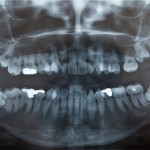
The sagittal split osteotomy (SSO) is a common procedure for the correction of mandibular deformities. It was first introduced Schuchardt in 1942 the current technique which has been refined an popularised in subsequent years. Overall it is a safe procedure the an important intra-operative complication being an unfavourable fracture with incidences varying between 0.7-20% being reported. The aim of this study was to investigate prospectively the effects of the presence or absence of third molars during sagittal split osteotomies (SSOs) on the frequency of unfavourable fractures, degree of entrapment and manipulation of the inferior alveolar nerve (IAN), and procedural time.
A prospective cohort of patients requiring an SSO as part of the correction of their dentofacial deformity were recruited for the study. Patients who had mandibular third molars removed less than 6 months before the planned SSO or who had had a previous SSO or prior mandibular fracture were excluded. The primary predictor variable was the status of the mandibular third molar at the time of SSO, and it was divided into 2 levels, present at the time of SSO (group I) or absent at the time of SSO (group II). The primary outcome variable was unfavourable splits. The secondary outcome variables were the degree of entrapment/manipulation of the IAN and the procedural time.
Six hundred seventy-seven SSOs were performed in 339 patients
They found
- The overall rate of unfavourable fractures was 3.1%
- There was no significant difference in the frequency of unfavourable splits between the two groups
- The rate of IAN entrapment in the proximal segment was significantly lower in group I
- The overall rate of unfavourable fractures was 3.1% (21 of 677), with frequencies of 2.4% (8 of 331) in group I, compared with 3.8% (13 of 346) in group II (P = .3). The rate of IAN entrapment in the proximal segment was significantly lower in group I (37.2%) than in group The degree of entrapment was also significantly more severe for group II (P < .001).
- Third molars increased procedural time by 1.7 minutes (P < .001).
- The effects of age, gender, surgeons experience, and those patietns who underwent a SSO and had a mandibular third molar present on but not the other were also considered.
[table id=23 /]
They concluded
The presence of third molars during SSOs is not associated with an increased frequency of unfavourable fractures. Concomitant third molar removal in SSOs also decreases proximal segment IAN entrapment but only slightly increases operating time.
Doucet JC, Morrison AD, Davis BR, Gregoire CE, Goodday R , Precious DS. The Presence of Mandibular Third Molars During Sagittal Split Osteotomies Does Not Increase the Risk of Complications. J Oral Maxillofac Surg. 2011 Dec 10. [Epub ahead of print] PubMed PMID: 22154398.

[…] Dental Elf – 7th Mar 2012- Presence of mandibular third molars during sagittal split osteotomi… […]